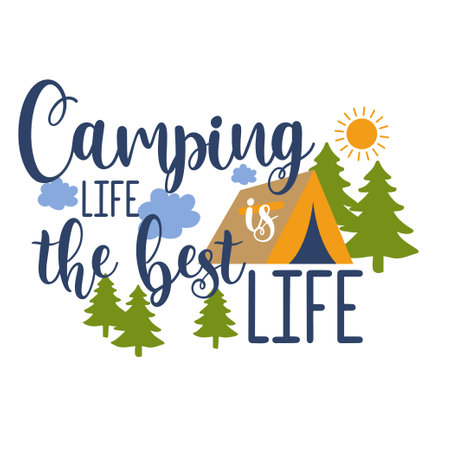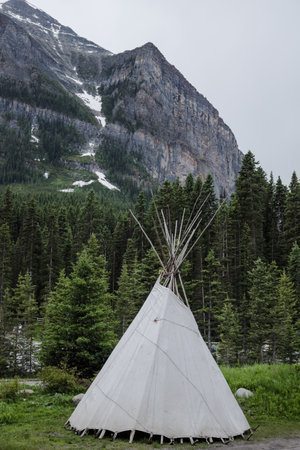1. Understanding Elevation and Its Impact on Comfort
When choosing your first camping site, elevation plays a big role in shaping your overall experience. It can affect everything from the temperature you’ll feel at night to how much energy you’ll need to hike or set up camp. Let’s break it down in a way that’s easy to understand—especially if you’re just getting into camping.
How Elevation Affects Temperature
The higher you go, the colder it gets. On average, the temperature drops about 3.5°F for every 1,000 feet of elevation gain. This means that even during summer, a high-elevation campsite could get pretty chilly once the sun goes down. If your sleeping bag and clothing aren’t rated for those cooler temps, you could be in for an uncomfortable (or even unsafe) night.
| Elevation (Feet) | Estimated Temperature Drop | Camping Gear Recommendation |
|---|---|---|
| Sea Level – 2,000 ft | Mild (0–5°F cooler) | Standard gear works fine |
| 2,000 – 5,000 ft | Moderate (5–12°F cooler) | Consider warmer layers and a mid-range sleeping bag |
| 5,000+ ft | Significant (12°F or more cooler) | Cold-weather sleeping bag and insulated gear needed |
Impact on Weather Patterns
Campsites at higher elevations are more likely to experience sudden weather changes. Afternoon thunderstorms are common in mountain regions during summer months. These areas may also have stronger winds and less shelter from natural elements like trees. That means you need to be prepared with a sturdy tent and rain gear.
Physical Exertion and Fitness Level
The higher the elevation, the thinner the air—which means less oxygen. Even if you’re in decent shape, hiking or setting up camp at 7,000 feet can feel a lot harder than doing the same thing near sea level. For first-time campers, it’s a smart move to start at moderate elevations where your body won’t struggle as much with exertion.
Tips for Matching Elevation with Your Comfort Level:
- If youre new to hiking: Stick to lower elevations under 3,000 feet.
- If youre moderately active: Aim for 3,000–5,000 feet but take breaks often.
- If youre fit and experienced: You can go higher—but still watch for signs of altitude sickness.
Final Tip:
If youre unsure about elevation levels when picking your site, use online tools like AllTrails or Gaia GPS to check the altitude before heading out. And always pack an extra layer—just in case!
2. Sun Exposure and Its Role in Camp Planning
When youre picking your first campsite, sun exposure might not be the first thing on your mind—but it should be. The angle and amount of sunlight your site gets can seriously affect your comfort, sleep schedule, and how you go about your day in camp.
How Sun Exposure Impacts Tent Placement
The sun rises in the east and sets in the west, so where you pitch your tent matters. If youre an early riser or want to warm up fast on a chilly morning, face your tent entrance toward the east. Morning sun helps dry dew off your gear and gently wakes you up with natural light. But if youre trying to sleep in or avoid overheating in warmer weather, look for shade from trees or hills that block the morning rays.
Sunlight and Your Sleep Cycle
Sunlight influences your body’s internal clock—your circadian rhythm. Too much light too early can wake you up before youre ready, especially if you’re camping during summer when the days are long. A shady spot can help you catch more Z’s and stay cooler during mid-morning hours.
Daily Routines Around the Sun
Your cooking area, seating spot, or hammock hangout will feel very different depending on how much sun they get. For example, setting up your kitchen area where there’s afternoon shade can make meal prep more pleasant and keep food from spoiling quickly. Think ahead about when youll use certain areas of camp and plan for sun accordingly.
Tips for Maximizing or Minimizing Sun Based on Season & Time of Day
| Season | Time of Day | What to Do |
|---|---|---|
| Summer | Morning | Use trees or terrain to block early sun for cooler sleeping |
| Summer | Afternoon | Set up common areas in shade to avoid heat exhaustion |
| Winter | Morning | Face tent east to soak up warmth as soon as possible |
| Winter | Afternoon | Avoid shaded valleys that stay cold all day |
Bonus Tip:
If youre using a solar panel to charge devices, place it in an open area with full southern exposure for maximum efficiency throughout the day.

3. Judging Wind Patterns and Natural Windbreaks
When youre picking your first campsite, wind might not be the first thing on your mind—but it should be. Wind can affect everything from how well your tent stays up to whether you can safely light a campfire. Understanding how to read wind patterns and use natural features to your advantage is a key skill for any camper.
Reading the Wind: What to Look For
Prevailing winds are the directions that wind typically comes from in a certain area. In much of the U.S., these winds come from the west, but local geography can shift this pattern. Heres how you can spot wind direction when you arrive at a site:
- Look at Trees: Trees often grow with a slight lean or have branches that are more developed on one side due to consistent wind.
- Check Grass and Bushes: Grasses and shrubs may also show signs of which way the wind usually blows.
- Feel It Out: Stand still and pay attention to where the breeze is hitting you. It’s simple but effective.
Using Natural Windbreaks
A windbreak is anything that blocks or slows down the wind. Nature provides plenty of options if you know what to look for. Setting up camp behind these features can protect your gear and make for a more comfortable night.
| Natural Feature | How It Helps |
|---|---|
| Trees (especially thick stands) | Create shelter from steady winds; good for tent placement |
| Boulders or rock outcrops | Block gusts at ground level; useful for cooking areas |
| Hills or ridgelines (on leeward side) | The side opposite the wind offers calm conditions |
| Shrubs or bushes | Lighter protection but can reduce small gusts near tents |
Tent Stability Tips
- Avoid ridge tops: These spots often catch the most wind.
- Peg down properly: Use all guy lines and stake securely—wind can pick up fast even on calm days.
- Select low ground: Slight dips or hollows offer natural shelter, but avoid flood-prone areas.
The Role of Wind in Campfire Safety
If it’s windy, even a small fire can quickly become dangerous. Wind can carry embers into dry brush, starting wildfires. Always build fires in designated pits, and never light one if gusty conditions exist. Use rocks or logs as barriers around your fire to help control airflow and contain heat.
If you plan ahead and pay attention to the signs around you, judging wind patterns becomes second nature. It makes your campsite safer, cozier, and more enjoyable overall.
4. Proximity to Water Sources: Pros and Cons
When picking your first campsite, being close to a water source like a river, lake, or creek can make your camping trip easier — but it also comes with some important things to consider. Let’s break down the advantages and potential risks of setting up near water.
Benefits of Being Near Water
Having water nearby is super convenient for:
- Cooking: Easy access to water for boiling pasta, making coffee, or cleaning dishes.
- Cleaning: Washing hands, brushing teeth, and rinsing gear is simpler when youre close to a stream or lake.
- Drinking (with filtration): You can filter or boil water from natural sources instead of packing in gallons from home.
Risks and Things to Watch Out For
While water makes things more convenient, camping too close can lead to trouble. Heres what to keep in mind:
- Bugs: Mosquitoes love standing water. The closer you are, the more likely youll get bitten.
- Wildlife: Animals use these same sources for drinking. Setting up too close could lead to surprise visitors like raccoons or even bears.
- Flooding: Rain upstream can cause sudden rises in water levels. Low-lying spots near rivers can flood quickly and unexpectedly.
How Close Is Too Close?
The general rule used by experienced campers and outdoor organizations like Leave No Trace is to set up camp at least 200 feet (about 70 adult steps) away from any natural water source. This helps protect the ecosystem and keeps your camp safe from flooding or curious animals.
Quick Reference Guide
| Factor | Recommended Practice |
|---|---|
| Distance from Water | At least 200 feet (70 steps) |
| Dishes & Cleaning | Carry water away from the source before washing; use biodegradable soap |
| Toileting | Dig catholes at least 200 feet from water sources |
| Tent Placement | Avoid low-lying areas that may flood during rainstorms |
Follow Leave No Trace Principles
If youre new to camping, one of the most important ethics to learn is Leave No Trace. When it comes to water, that means:
- Don’t wash directly in streams or lakes.
- Bury waste properly away from water sources.
- Avoid trampling vegetation near shorelines.
A Little Distance Goes a Long Way
Campsites that are just far enough from the water still give you all the benefits without putting you, wildlife, or the environment at risk. Think ahead and choose wisely—it’s worth those extra few steps!
5. Vegetation, Wildlife, and Environmental Sensitivity
When youre picking your first camping spot, it’s easy to focus on the view or proximity to trails. But thinking about how your site affects the environment is just as important. Choosing a location that respects the local ecosystem helps preserve nature for future campers—and avoids unwanted encounters with wildlife.
Stay Off Fragile Vegetation
Some plants might look sturdy, but even a single night of tent placement can damage delicate ground cover or wildflowers. Try to camp on durable surfaces like dirt, gravel, or dry grass. Avoid mossy areas or places with lots of undergrowth.
| Surface Type | Camp-Friendly? | Why |
|---|---|---|
| Dry Grass | Yes | Recovers quickly, minimal impact |
| Moss or Wetland | No | Easily damaged, slow recovery |
| Dirt/Gravel | Yes | Durable and low-impact |
| Lush Underbrush | No | Disturbs plant life and habitat |
Avoid Animal Trails and Habitats
It might not be obvious at first glance, but many animals use the same paths through forests and valleys. These “game trails” are often narrow and worn, usually leading to water sources. Setting up camp nearby can disturb their natural routines—and put you in close contact with wildlife youd rather admire from a distance.
Tips for Respecting Wildlife:
- Look for signs of animal activity like tracks or droppings before setting up camp.
- Keep at least 200 feet from water sources so animals can access them undisturbed.
- Store food in bear-proof containers or hang it properly when needed.
Be Mindful in Sensitive Environments
Certain environments—like alpine meadows, deserts, and wetlands—are more sensitive than others. In these places, even small disturbances can take years to recover. If youre unsure whether an area is environmentally fragile, stick to established campsites whenever possible.
Examples of Sensitive Habitats:
- Alpine Zones: Thin soil and short growing seasons make recovery slow.
- Desert Areas: Cryptobiotic soil is alive and easily destroyed by foot traffic.
- Wetlands: Essential for biodiversity but easily compacted and disturbed.
Your campsite should leave no trace. That means thinking beyond trash and firewood—its about being aware of how your presence affects everything around you. With just a little extra care, you can enjoy the outdoors while keeping it wild for the next explorer.


